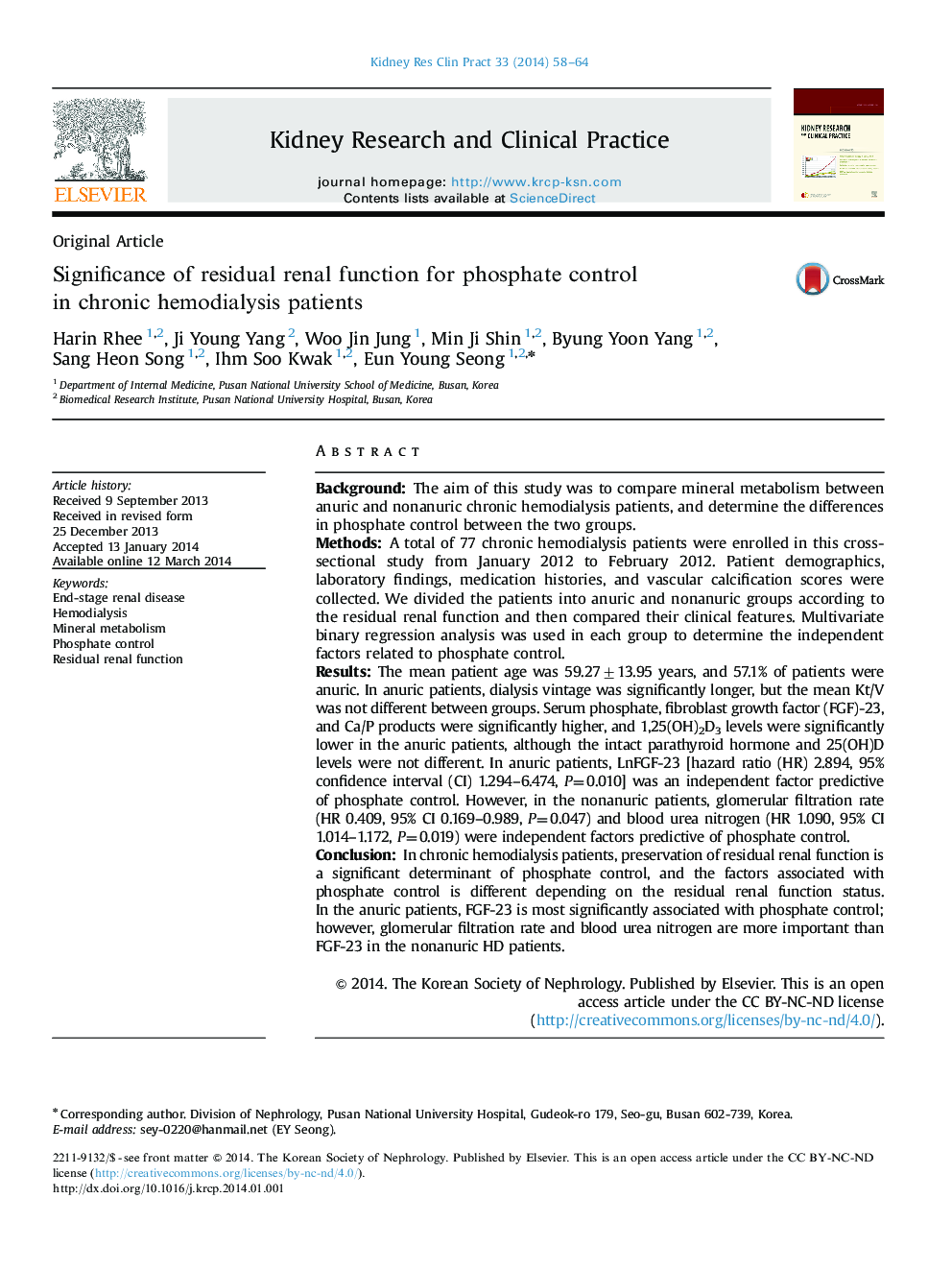| کد مقاله | کد نشریه | سال انتشار | مقاله انگلیسی | نسخه تمام متن |
|---|---|---|---|---|
| 3891125 | 1250022 | 2014 | 7 صفحه PDF | دانلود رایگان |
BackgroundThe aim of this study was to compare mineral metabolism between anuric and nonanuric chronic hemodialysis patients, and determine the differences in phosphate control between the two groups.MethodsA total of 77 chronic hemodialysis patients were enrolled in this cross-sectional study from January 2012 to February 2012. Patient demographics, laboratory findings, medication histories, and vascular calcification scores were collected. We divided the patients into anuric and nonanuric groups according to the residual renal function and then compared their clinical features. Multivariate binary regression analysis was used in each group to determine the independent factors related to phosphate control.ResultsThe mean patient age was 59.27±13.95 years, and 57.1% of patients were anuric. In anuric patients, dialysis vintage was significantly longer, but the mean Kt/V was not different between groups. Serum phosphate, fibroblast growth factor (FGF)-23, and Ca/P products were significantly higher, and 1,25(OH)2D3 levels were significantly lower in the anuric patients, although the intact parathyroid hormone and 25(OH)D levels were not different. In anuric patients, LnFGF-23 [hazard ratio (HR) 2.894, 95% confidence interval (CI) 1.294–6.474, P=0.010] was an independent factor predictive of phosphate control. However, in the nonanuric patients, glomerular filtration rate (HR 0.409, 95% CI 0.169–0.989, P=0.047) and blood urea nitrogen (HR 1.090, 95% CI 1.014–1.172, P=0.019) were independent factors predictive of phosphate control.ConclusionIn chronic hemodialysis patients, preservation of residual renal function is a significant determinant of phosphate control, and the factors associated with phosphate control is different depending on the residual renal function status. In the anuric patients, FGF-23 is most significantly associated with phosphate control; however, glomerular filtration rate and blood urea nitrogen are more important than FGF-23 in the nonanuric HD patients.
Journal: Kidney Research and Clinical Practice - Volume 33, Issue 1, March 2014, Pages 58–64
